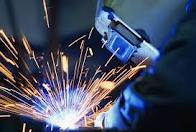| |
|
| |
|
 |
Supply
Chain by the Numbers |
| |
|
| |
- March 8, 2018 -
|
| |
|
| |
|
| |
|
| |
Different Views of the State of US Manufacturing; US Oil Output to Surge; Levi's Goes Digital to Produce Weathered Jeans; Lego Making Slow Progress on Plant-Based Plastics |
| |
|
| |
| |
| |
2.2% |
 |
That is the average annual increase in prices for US manufacturing goods since 1947, versus 3.2% for the overall economy. Why is that important? Because the difference in price rises over time between that eseen for manufactureud products and other things we buy such as service is a huge reason why the share of US nominal (not inflation adjusted) GDP coming from manufacturing has fallen so steeply, from about 27% in the early 1950s to only about 12% today. But much of that decline can simply be explained by the differences in price changes over time. In other words, the share of manufacturing "units" produced relative to the overall economy shows a much brighter picture than does the view based on prices – which supply chain and other efficiencies have kept low. In fact, the share of US GDP relative to real GDP – taking out the effects of inflation – have stayed almost flat since 1947, at a little over 12% then, a bit under 12% today. The graph of the share is basically flat over the period. Interesting…
|
|
|
| |
| |
|
|
|
That's about how many seconds it is taking iconic jeans maker Levi's to finish a pair of trousers with a weathered look in tests using a new laser-based process, versus 20-30 minutes of manual labor in the existing process. The Levi's announcement marks yet another step in the computer-driven transformation of apparel manufacturing from a labor-intensive industry to a capital-intensive one – which in the end could lead to some production returning to the US and other Western countries. "Imagine managing 300 to 400 people who do nothing for eight to 10 hours but to load a mannequin and then with sandpaper on their hands to begin the destruction process to remove the indigo," said an executive from Jeanologia, a Spanish company that makes the laser machines Levi's is testing. Now, that labor pool is reduced to a few workers and the process takes minutes, based on patterns Levi's designers create on a tablet computer and are fed into laser system. All told, the process reduces the design and development time in half, Levi's says, in an interesting example of "digitization" in the supply chain.
|
| |
| |
|
| |
| |
1-2% |

|
That is the share of the total plastic parts toy giant Lego produces that will soon be made from a plant-based material instead of the oil-based plastic the company has traditionally employed. The new material is a polyethylene derived from sugar cane, and comes from a Brazilian firm named Braskem, which has a process for converting ethanol from sugar cane into ethylene, the precursor for polyethylene. To be clear, the new material will for now only be used for what the company calls "botanical" elements such as bushes and trees that are sometimes included in say a Lego kit to create a building. The iconic Lego bricks for now will still be made of ABS plastics. The move is a first step in a plan the company announced in 2015 to reduce its impact on the environment by phasing out fossil fuel-derived plastic. Lego says it will spend $150 million and hire more than 100 staffers to research and develop sustainable raw materials to replace petrochemical-based polymers by 2030. That's a real challenge: the bricks have to attach to each other and pull apart just right - Lego has said previously it had not yet found a sustainable material that could produce the same performance as oil-based plastics, but it is committed to do so. |
| |
| |
|
|
|
| |
 |
 |
| |
|
|
| |